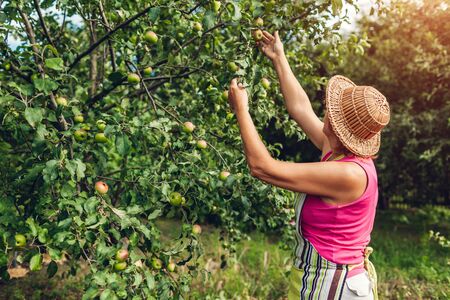Understanding the Basics of Allotment Crop Rotation
If you’ve ever strolled through a British allotment site, you’ll know that growing your own fruit and veg is as much about tradition as it is about taste. But there’s one bit of old-fashioned wisdom that never goes out of style: crop rotation. At its heart, crop rotation simply means not planting the same type of crop in the same patch year after year. This practice is absolutely vital on UK allotments for two main reasons—keeping the soil healthy and keeping pests and diseases at bay.
Now, you might be wondering why all this fuss about moving your crops around. Well, different plants take different nutrients from the soil and some even help put important stuff back in. For example, legumes like peas and beans actually fix nitrogen into the earth, giving a natural boost for whatever follows them. If you keep planting spuds or cabbages in the same spot, you’re asking for trouble—soils get tired and depleted, and pests like clubroot or potato eelworm get far too comfortable.
Proper crop rotation is about working with nature, not against it. By following a simple three- or four-year plan (think roots, brassicas, legumes, and then potatoes), you’re helping to break the life cycle of soil-borne nasties and giving each bed a chance to recover. It’s an old trick that’s stood the test of time on British plots, ensuring your harvests stay bountiful and your soil stays lively for years to come.
Choosing the Wrong Crop Groups
One of the most frequent mistakes seen on British allotments is muddling up crop groups when planning a rotation. Many new gardeners, and even some with a few seasons under their belt, often categorise crops based on culinary uses or what “looks right” rather than botanical family or shared soil needs. This can lead to disease build-up and unbalanced soil nutrients, undermining the very purpose of rotation.
In the UK, the traditional grouping system for effective crop rotation usually divides vegetables into four main categories: Legumes, Brassicas, Roots & Onions, and Potatoes & Others. Mixing these up—say, by putting onions with brassicas because they’re both winter staples—can invite trouble. For example, brassicas need firm, limed soil, while onions are less fussy but shouldn’t follow other alliums due to risk of onion white rot. Here’s a simple table to clarify:
| Crop Group | Typical Vegetables | Key Considerations |
|---|---|---|
| Legumes | Peas, Beans | Add nitrogen to soil; avoid following with more legumes |
| Brassicas | Cabbage, Broccoli, Kale, Sprouts | Need lime-rich soil; prone to clubroot if not rotated properly |
| Roots & Onions | Carrots, Parsnips, Onions, Leeks, Beetroot | Prefer unfertilised ground; avoid following with same group due to pest build-up |
| Potatoes & Others | Potatoes, Courgettes, Squash | Heavy feeders; help break up soil; don’t plant after tomatoes to prevent blight spread |
The trick is to stick to these broad families and rotate them in sequence each year. Avoid being tempted by shortcuts or grouping based on what you fancy eating together at supper. Trust me—as someone who once lumped garlic and cabbage together for convenience and ended up battling allium leaf miner—you’ll save yourself a headache by respecting these tried-and-true groups.

3. Overlooking the Importance of Soil Preparation
One of the most common pitfalls among British allotment holders is underestimating just how vital proper soil preparation is to the success of crop rotation. It’s easy to assume that simply rotating crops will keep your plot healthy, but the truth is, if you neglect soil improvements and amendments, you’ll miss out on many of the benefits crop rotation can offer. Over time, even well-rotated plots can become compacted, tired, or imbalanced in nutrients if you don’t give the soil a helping hand.
Why Soil Preparation Matters
Crops take up different nutrients and leave behind others, so without regular attention to your soil’s needs, deficiencies and imbalances can develop. For example, brassicas are hungry for nitrogen, while root crops benefit from lighter, stone-free ground. If the soil isn’t replenished or improved between rotations, yields can suffer and diseases may become more prevalent.
Common Oversights in British Allotments
It’s all too easy to skip digging in compost or well-rotted manure at the end of a long growing season—especially when the weather turns wet and chilly. Many also forget to test their soil’s pH or add lime to beds destined for brassicas (which helps prevent clubroot—a notorious British allotment scourge). Others may not break up compacted ground or fail to incorporate green manures, missing out on valuable organic matter and nutrients.
Practical Guidance for British Soils
To avoid these mistakes, make it part of your routine to assess each bed’s condition before rotating new crops in. Add homemade compost or farmyard manure every year—especially after heavy feeders like potatoes or courgettes have had their turn. Consider autumn digging or ‘no-dig’ mulching with organic matter to improve structure and encourage earthworms. Test your soil pH every couple of years; most British soils benefit from a bit of lime before planting brassicas but check first as some areas (like chalky soils) may already be alkaline. Finally, sow green manures such as field beans or clover over winter to protect bare ground and add fertility naturally.
4. Forgetting to Plan Ahead and Keep Records
If there’s one thing any seasoned British allotment holder will tell you, it’s that good planning and diligent record-keeping are as much a part of the tradition as the Sunday roast or a well-brewed cuppa. Overlooking these essential practices is a common pitfall, often resulting in muddled crop rotation and underwhelming harvests.
Allotment gardening in the UK has always valued orderliness—after all, many plots have been handed down through generations, with notebooks brimming with planting dates, varieties tried, and weather notes scribbled in the margins. When you neglect to plan ahead or fail to jot things down, it’s easy to forget what went where last year. This can lead to planting crops from the same family in the same bed two years running—a recipe for tired soil and rampant pests.
The Importance of Organisation
Without a clear record, even the most experienced grower can be caught out. It might seem simple enough to remember where your potatoes were last season, but come springtime, after a long winter, memories can play tricks. This lack of organisation is often at the heart of rotation mistakes—and once made, they’re not easily undone within a single season.
Simple Record-Keeping Methods
There are various ways to keep your records in order; some prefer the traditional paper notebook, while others opt for spreadsheets or dedicated gardening apps. Here’s a straightforward table outlining what information is most useful to track each year:
| Bed Number/Name | Crop Grown (Year) | Fertiliser/Compost Added | Pest/Disease Issues | Notes for Next Year |
|---|---|---|---|---|
| Bed 1 | Brassicas (2023) | Well-rotted manure | Cabbage root fly | Add mesh covers early |
| Bed 2 | Legumes (2023) | Comfrey feed | Aphids late summer | Plant nasturtiums nearby |
Tried-and-Tested Tips from British Allotmenteers
Many experienced plot holders swear by using coloured markers on their beds or drawing simple diagrams at the start and end of every season. Some families have passed down dog-eared ledgers filled with decades of wisdom—it’s all about finding what works for you. The key takeaway? A little time spent planning and keeping notes now saves frustration later and keeps your crop rotation on track for many fruitful seasons to come.
5. Ignoring Local Pests, Diseases, and Weather Patterns
One of the most common mistakes made by both new and seasoned allotmenteers is overlooking the importance of region-specific challenges when planning crop rotation. It’s all well and good to follow a textbook rotation plan, but if you’re not factoring in the unique threats that your particular patch of British soil faces, you might find yourself fighting an uphill battle.
Understanding Your Local Environment
The UK boasts a rich variety of climates and microclimates, from the damp west to the drier east, and even within a single county, conditions can vary wildly. For example, gardeners in Cornwall might regularly contend with potato blight due to higher humidity, while those in Lincolnshire are more likely to battle clubroot in their brassicas thanks to heavier soils. Ignoring these local factors can undo all your careful planning and hard graft.
Common Pests and Diseases in the UK
It’s essential to get to know what’s lurking around your allotment site. Have a natter with fellow plot holders—many have seen it all before and will happily share what tends to pop up year after year. Common foes include:
- Blight: Particularly troublesome for potatoes and tomatoes during wet summers.
- Clubroot: A persistent problem for brassicas, especially on acidic or poorly drained soils.
- Cabbage root fly: Targets brassica crops; netting and collars can help but knowing when they’re active is vital.
- Carrot fly: Loves low-growing carrots; companion planting or barriers can reduce risk.
Adapting Your Rotation Plan
If you know clubroot is rife on your site, avoid growing brassicas in affected beds for as many years as possible—ideally seven or more. Consider adding lime to raise soil pH where appropriate, as clubroot prefers acidic conditions. For blight-prone areas, select blight-resistant varieties and plant early potatoes so you can harvest before the worst hits. Keep records each season: which crops thrived, which succumbed to disease, and when issues appeared. This knowledge will become invaluable over time—it’s what separates old hands from green novices.
Weather Patterns: Plan Ahead
The British weather is famously unpredictable, but certain patterns do emerge locally. Some years bring prolonged damp spells (perfect for fungal diseases), while others are dry as dust (ideal for aphids). Pay attention to your area’s quirks: does your plot flood easily? Is it exposed to biting winds? Adjust sowing dates, choose hardy varieties, and use windbreaks or cloches where needed.
A Final Word from Experience
No two plots are exactly alike—even if they’re side by side! The key is to observe closely and respond accordingly. Take advice from those who’ve been tending their patches for decades; their experience with local pests, diseases, and weather is worth its weight in gold. Remember: successful crop rotation isn’t just about moving veg from bed to bed—it’s about working with the land you’ve got, warts and all.
6. Neglecting Green Manures and Fallow Periods
If there’s one nugget of wisdom passed down through generations on British allotments, it’s the value of letting the land rest and recover. Yet, in the rush to squeeze every ounce of productivity from our plots, many modern growers overlook two time-honoured practices: sowing green manures and allowing for fallow periods.
Green manures—cover crops like field beans, clover, or phacelia—aren’t just old-fashioned ideas for those with too much time on their hands. They play a crucial role in nourishing tired soil, suppressing weeds, and improving structure without relying on chemical inputs. When dug in at the right moment, these plants return vital nutrients to the earth, especially nitrogen, which is often depleted after a season of hungry crops like brassicas or sweetcorn.
Similarly, giving a bed a rest—leaving it fallow for a season or even just a few months—allows nature to restore balance. It breaks pest and disease cycles that can build up year after year if we insist on non-stop planting. In my early days, I was impatient to fill every inch with something edible, but I soon learned that an occasional pause in cultivation led to stronger crops in subsequent years.
The mistake comes when these practices are dismissed as unnecessary or too slow for modern tastes. But talk to any seasoned allotmenteer on a drizzly morning and you’ll hear stories about how their best spuds or broad beans followed a green manure crop or came after a well-rested patch.
To avoid this common pitfall, plan your rotation calendar with these “restorative pauses” built in. Rotate green manure sowings between your main crops and don’t be afraid to leave one bed uncultivated now and again. Not only does this respect the natural rhythms of the soil, but it often pays dividends in healthier harvests and fewer problems down the line—a lesson learned from the old hands who’ve seen it all before.
7. Mistaking Companion Planting for Rotation
If you’ve been tending an allotment for a while, you’ll likely have come across both companion planting and crop rotation. It’s easy to muddle the two up, but understanding the distinction is vital for long-term soil health and productive plots. Many allotment holders in the UK inadvertently treat these methods as interchangeable—so let’s set the record straight.
Companion Planting: Friends in the Same Bed
Companion planting is all about pairing plants that benefit each other when grown side by side. Classic British examples include growing carrots with onions to ward off carrot fly, or nestling marigolds among tomatoes to deter pests. The main aim here is to enhance growth, attract beneficial insects, or offer some natural pest control within the same season and bed.
Crop Rotation: A Longer-Term Strategy
In contrast, crop rotation focuses on what you grow in each bed over several years, not just one season. The idea is to move plant families around your allotment so that diseases and soil-borne pests don’t build up, and nutrients aren’t depleted by repeated cultivation of similar crops. For example, following brassicas with legumes helps replenish nitrogen levels in the soil—an old trick passed down through generations of British gardeners.
The Common Pitfall
A frequent mistake is thinking that simply mixing up companion plants means you’re rotating your crops effectively. While it’s lovely to see beans cuddled up with sweetcorn or basil tucked under tomatoes, if you keep planting the same crop family in one spot year after year—even alongside their companions—you risk exhausting your soil and encouraging persistent diseases like clubroot or onion white rot.
Working in Harmony: Getting the Best of Both Worlds
The wise approach is to use companion planting within each bed as part of your seasonal plan, but always rotate your main crop families annually. This way, you enjoy both the short-term benefits of happy plant partnerships and the long-term rewards of healthy soil and resilient crops. Draw up a simple four-year rotation plan (roots, legumes, brassicas, potatoes), then layer in companions suited to each group—just as many seasoned British plot holders do.
By recognising the difference between these two time-honoured techniques and weaving them together thoughtfully, you can avoid common pitfalls and make your allotment thrive for many seasons to come.


